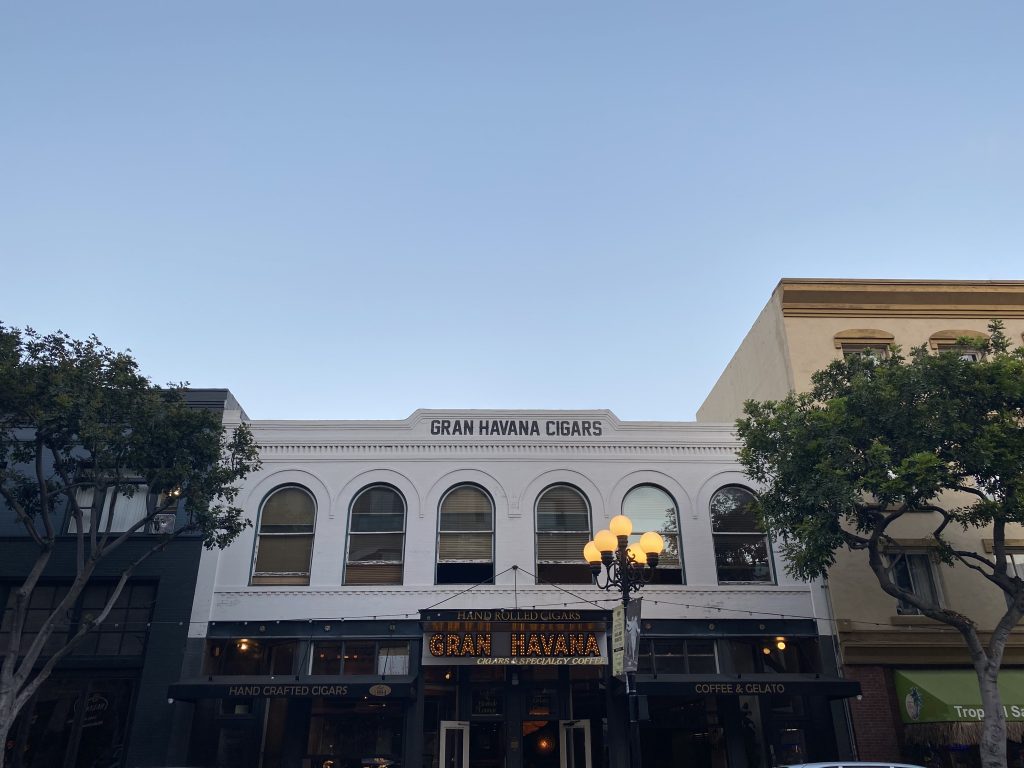Landmarks
Many Forms of Labor by Many Hands
Labor Temple Building
1907
739-745 Fourth Avenue
Architect: Edward Quayle
Architectural Style: Romanesque
Many wonder just exactly what a Labor Temple is. It is defined as an organization created for the purpose of improving conditions for those who work, including agricultural, educational, instructive and also, unions. The building is their “temple,” or meeting place. Throughout its long tenure, the Gaslamp’s Labor Temple Building has housed many of these, including unions for bartenders, cigar makers, theatrical employees , hod carriers and the Women Union Labor Leagues.
Like most lots in early San Diego, the initial lot sale was from A.E. Horton to Rebecca D. Parsons for $300. Her husband owned Parson Brothers, a contracting firm, which built the Parsons a residence on the property. The Parsons, however, only lived in the one-story frame structure for one year. The property passed through several owners in rapid succession. One ,in particular, was memorable as he had a connection to the Davis-Horton House , when it was in use as the County Hospital. That gentleman, J.A.P. Vauclain, purchased the Parson property in late 1886., but turned it around shortly afterwards for a $3,000 profit. Vauclain came to San Diego for health reasons, as he suffered from consumption. He credited the excellent care performed by Head Nurse, Anna Scheper, as the reason for his recovery. He later tried to establish a colony for lung patients, but that endeavor did not prove feasible. In his will, he left $17,000 in cash and property to the County for the founding of Vauclain Home, a tuberculosis sanatorium. The County acquired property in Mission Hills, and opened the sanatorium in 1919. It remained in operation until 1964.
In 1907, the Labor Temple Building was built for the then-current owner, Willard Washington Whitney, a local entrepreneur and citrus grove owner. Mr. Whitney, a very wealthy man, had many interests including ranching, piano manufacturing and music publishing. He was also ultimately responsible for the San Diego Scientific Library in Balboa Park
The late-Victorian commercial style structure is a two-story brick building with a framed cornice and a flat composition roof. It features a parapet and two skylights. In true Victorian fashion, it has a symmetrical facade with a centered main entrance and two additional entrances on either end of the building. Large plate glass windows flanked the entrance, which provided light and allowed viewing access into the interior. This two-story brick edifice is labeled Romanesque because of the noteworthy arched windows, which grace the second floor. The six windows are rectangular, evenly spaced, and double-sashed with arched frames. They feature a dentil detail directly below. The artfully styled facade reflects the Victorian love of symmetry in all things, especially architecture.
When the building opened it housed the Arizona Bar, a saloon. In 1910, the Arizona was replaced by the Labor Temple, a union meeting place, which remained until 1913. It served the many tradesmen, both men and women, who were working to build and enhance the growing city of San Diego. The structure was then devoid of business for three years until it became a machine shop, which remained until 1924. In the ensuing years, the building housed the Volunteers of America, Harold Lord’s Paints, the Pacific Chemical Company, and the San Diego City Health Offices, which included the City Board of Health, the Food Inspector, the County Health Officer, the State Department of Agriculture and the Meat and Dairy Inspector. These were followed by the Gaslite Saloon and the Moon Cafe.
The building underwent a renovation and rebirth in 1994, when it was purchased by Bill and Joan Keller. Bill, a member of the Board of Directors of the Gaslamp Quarter Historical Foundation, and his wife, Joan, previously opened stores in Pacific Beach and Horton Plaza. They purchased the aging structure, renovated it and relocated their popular business, Le Travel Store, to the Fourth Avenue address. During the rehab, layers of plaster were removed to expose the original brick and the original electrical system. Le Travel Store operated successfully until August of 2013 when the Kellers closed its doors and retired.
The building now houses the Gran Havana Cigar and Hookah Lounge, featuring hand-rolled cigars and accessories, coffee, gelato, crepes and desserts. It embodies the spirit of Old Havana, and is a popular late night venue.
Sandee is the Historian for the Gaslamp Quarter Historical Foundation. She can be reached at [email protected].

